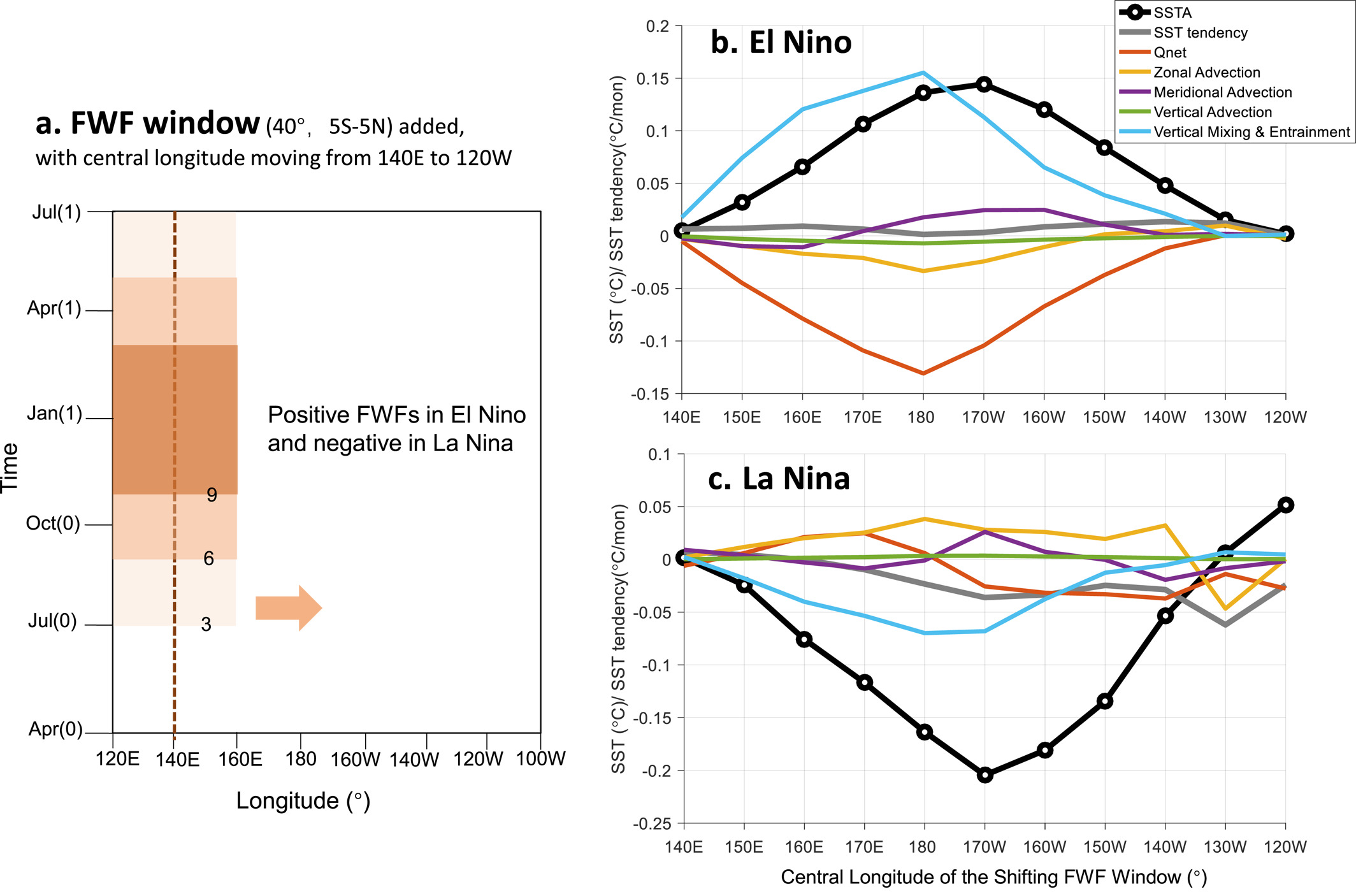Zonal Structure of Tropical Pacific Surface Salinity Anomalies Affects ENSO Intensity and Asymmetry
Cong Guan, Feng Tian, Michael J. McPhaden, Fan Wang, Shijian Hu, Rong-Hua Zhang
Published in Geophysical Research Letter, DEC 2021
Previous studies have revealed the potential importance of salinity in El Niño-Southern Oscillation (ENSO) asymmetry, but the responsible mechanisms remain unclear. Here, we investigate how the zonal structure of surface salinity anomalies affects ENSO intensity and asymmetry by modifying freshwater flux in ocean general circulation model simulations. Results show that the amplitudes of El Niño and La Niña are both highly sensitive to zonal patterns of salinity anomalies, with the strongest sea surface temperature change occurring when maximum salinity anomalies are located near 170°W. Furthermore, the effect of salinity anomalies in the central Pacific on El Niño warming is larger than those in the western Pacific on La Niña cooling. Thus, the asymmetric salinity anomalies strengthen the temperature asymmetry between El Niño and La Niña. Temperature budget analysis shows that vertical mixing and entrainment due to salinity-induced changes in stratification are a major response to different zonal patterns of freshwater flux forcing.

FIG. The freshwater flux (FWF) sliding window (a) and their forced sea surface temperature (SST) anomalies (thick black lines) during the mature phases and temperature budget terms (color lines) during the developing phases of El Niño (b) and La Niña (c) averaged in the Niño4 region. The X-coordinates of (b) and (c) are the central longitudes of the FWF forcing window in each experiment.
Guan, C., Tian, F., McPhaden, M. J., Wang, F., Hu, S., & Zhang, R.-H. (2022). Zonal structure of tropical Pacific surface salinity anomalies affects ENSO intensity and asymmetry. Geophysical Research Letters, 49, e2021GL096197. https://doi.org/10.1029/2021GL096197